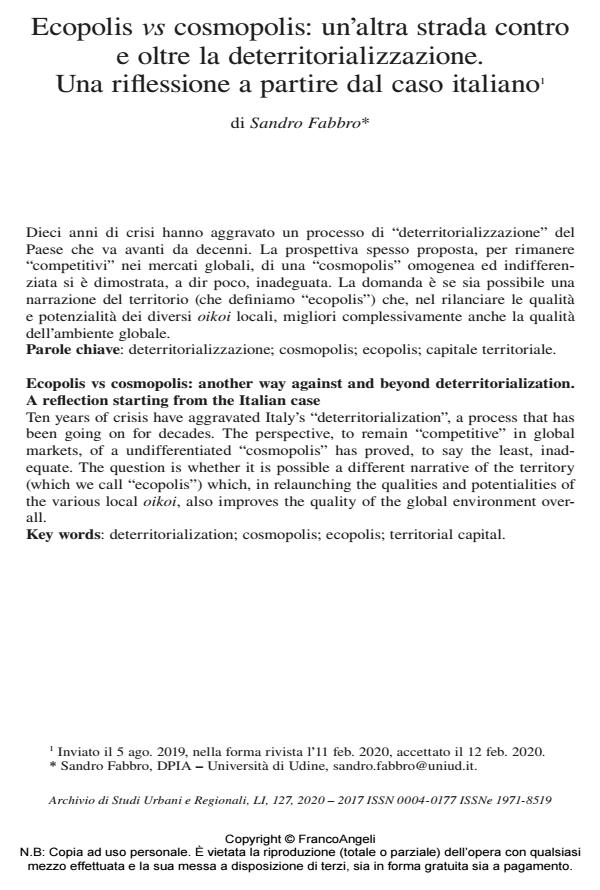Ecopolis vs cosmopolis: another way against and beyond deterritorialization. A reflection starting from the Italian case
Journal title ARCHIVIO DI STUDI URBANI E REGIONALI
Author/s Sandro Fabbro
Publishing Year 2020 Issue 2020/127
Language Italian Pages 26 P. 122-147 File size 165 KB
DOI 10.3280/ASUR2020-127006
DOI is like a bar code for intellectual property: to have more infomation
click here
Below, you can see the article first page
If you want to buy this article in PDF format, you can do it, following the instructions to buy download credits

FrancoAngeli is member of Publishers International Linking Association, Inc (PILA), a not-for-profit association which run the CrossRef service enabling links to and from online scholarly content.
Ten years of crisis have aggravated Italy’s "deterritorialization", a process that has been going on for decades. The perspective, to remain "competitive" in global markets, of a undifferentiated "cosmopolis" has proved, to say the least, inadequate. The question is whether it is possible a different narrative of the territory (which we call "ecopolis") which, in relaunching the qualities and potentialities of the various local oikoi, also improves the quality of the global environment overall.
Keywords: Deterritorialization; cosmopolis; ecopolis; territorial capital.
Sandro Fabbro, Ecopolis vs cosmopolis: un’altra strada contro e oltre la deterritorializzazione. Una riflessione a partire dal caso italiano in "ARCHIVIO DI STUDI URBANI E REGIONALI" 127/2020, pp 122-147, DOI: 10.3280/ASUR2020-127006